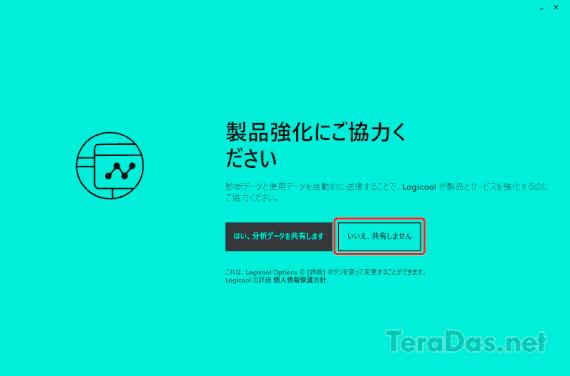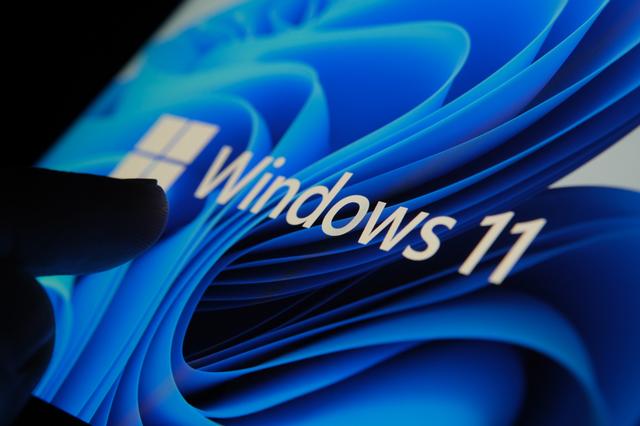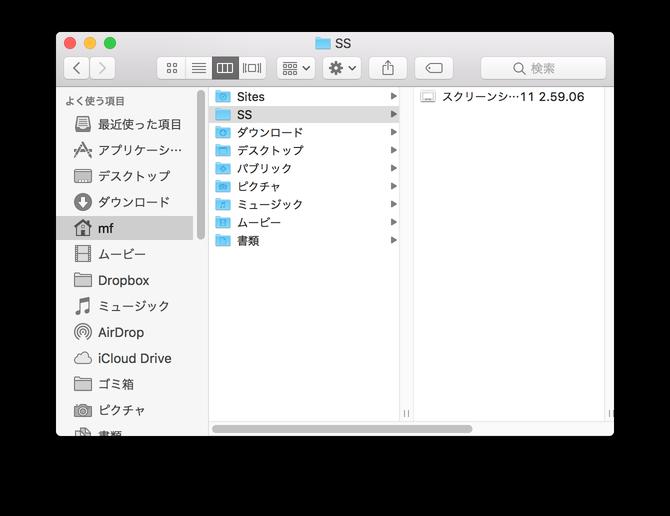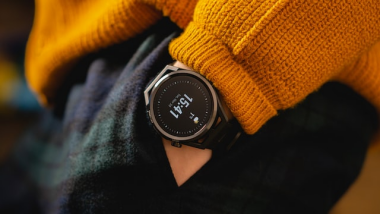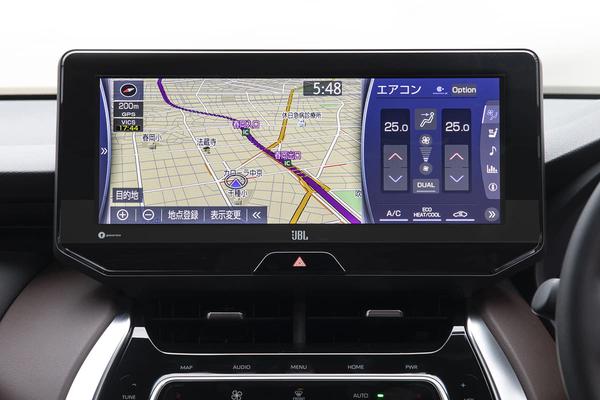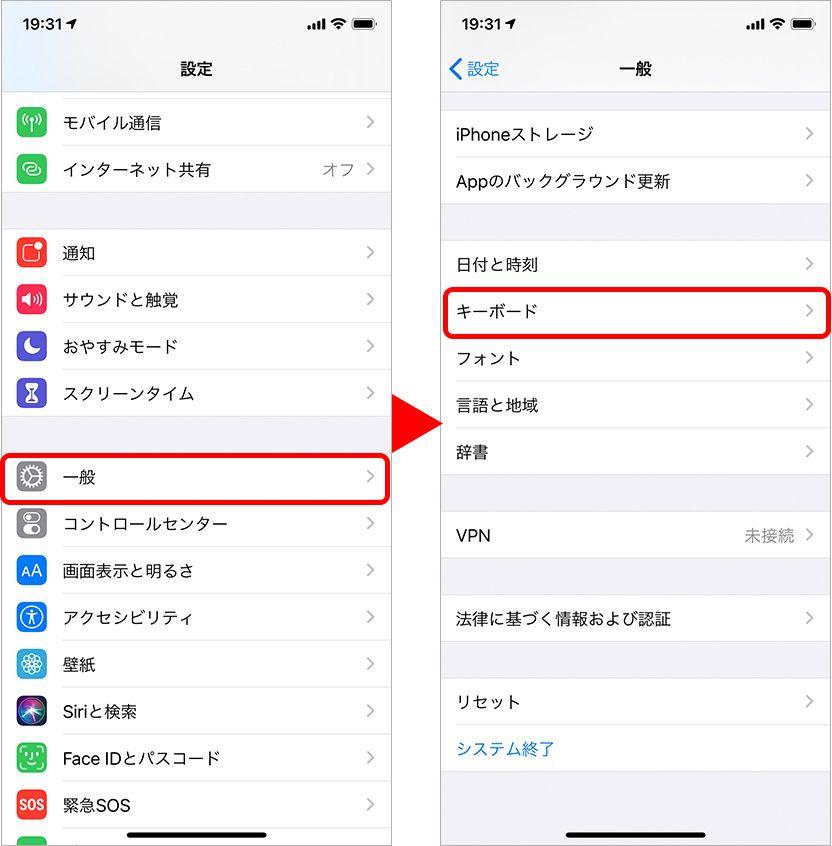The 11th EIZO Medical Seminar 2015 "How to Use Video in Various Medical Services"
Eizo Co., Ltd. held the 11th EIZO Medical Seminar 2015 in Bleese Plaza (Kita -ku, Osaka) on September 27, 2015.In this seminar, which was called "how to utilize images in various medical fields," lectures related to the use of video information in medical fields and quality control of equipment were given.
セッションⅠ手術室における映像技術〜ランチョンセミナー〜
手術室の映像ソリューションを革新する 〜CuratORのご紹介〜
EIZO Co., Ltd. Technical Development Strategy Office Development Manager Takahiro Yoneda
手術室の映像を集約・表示するシステム「CuratOR」
米田貴博氏 手術室内には、手術部位をリアルタイムで光学撮影する内視鏡、術野カメラ、手術用顕微鏡、患部を透視撮影するCアームや超音波など、先進医療を支えるさまざまな医療機器の映像が共存している。安全かつ低侵襲な手術を行うためには、刻々と変わる手術の状況に応じて必要な画像・映像を提示し、それらを手術チーム内で迅速に情報共有する必要がある。しかし、一方で、各医療機器の映像が手術室内で分散しているケースが多く、全スタッフから見やすい位置にあるとは限らない。この問題を解決するのが、 CuratOR(キュレーター)ソリューションである(図1)。 英単語curatorは、学芸員という意味で、美術館において設定されたテーマに応じて、最適な作品を選び展示する役割を担う。手術室におけるCuratORも同様に、手術の状況に応じて最適な映像を集約・表示する役割を担うもので、各スタッフへの最適な表示を実現する。図1 CuratORイメージ図手術室内に分散する各映像を集約・表示するというアプローチで手術スタッフを支援する。図2 CuratORにおける集中操作CuratORで使われる様々な機器の、シンプルかつ直感的な操作を可能にする。CuratORの特長
Curator's strength is (1) conversion and aggregation of various video signals, (2) the existence of signal distribution managers for aggregation of images, and (3) the existence of large monitors. Signal distribution manager LMM (Large Monitor Manager) is located in the center of Curator, and realizes intuitive layout switching with mouse and touch panels, which are integrated and switched to various images, and share keyboard and mice. The video converter is converted to a format that can input various video signals in the operating room to LMM, and also supports medical devices that output a unique signal from the old days. "Surgical Panel", which collects and displays multiple video information and biometric information in the second tier of LMM, comes with an antibacterial keyboard mouse with a design that can be embedded in the wall. By consolidating videos of under surgical monitors and medical devices such as PACS, which had been placed on the floor so far, the movement and flow of staff in the operating room will be refreshed. By using the KVM function, operations such as nursing record input and PACS image browsing can be integrated. The software that concentrates these devices is designed so that medical staff, which are not always familiar with IT equipment, can intuitively operate all devices (Fig. 2). Introducing Curator's introduction effect Curator, more than 10 types of images were integrated, surgical time was reduced, and the number of images of seven cars was expanded by aggregation of seven images, and one set of mice. There are examples that can be operated on the keyboard, making it easier to explain treatment to patients and families. By recording the aggregate video, the patient's condition, the movement of the medical staff, and the treatment of the treatment can be listed, and it can be used for the presentation of the society. Various applications are possible, such as being able to provide support and guidance at the appropriate timing from the conference room that displayed a large monitor.
セッション Ⅱ 手術室における映像の活用
市田隆雄先生座長:大阪市立大学医学部附属病院中央放射線部技師長市田隆雄先生脳神経外科手術に求められる手術室映像ソリューション
Kyoto University Graduate School of Medicine Graduate School of Medicine Brain Neurosurgery Dr. Yoshiki Arakawa
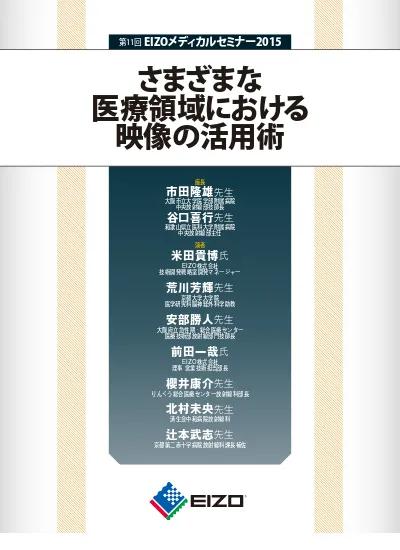
手術室における画像情報問題点とハイブリッド手術室の導入
荒川芳輝先生 小さくて柔らかな脳や細くて弱い神経を扱う脳神経外科は、顕微鏡手術、内視鏡手術、血管内手術が3本柱となる。神経の機能の温存のために、多くのテクノロジーを駆使している。 脳神経外科手術を支える最新技術には、電気生理学的モニタリング、ナビゲーション、Functional MRI、Tractography、3次元構築画像解析、術中MRI、術中CT、覚醒下手術、血管内治療、ハイブリット手術などがあり、多数の画像情報が生まれる。 画像に依存する手術であるにもかかわらず、2012年まで当院手術部では適切な大型モニタが設置されておらず、複数モニタを並べて見る、画像情報があちこちに散らばっている状態であった。多数の画像情報の保存もできておらず、有効利用できていない状況であった。 問題解決のため、2010年、最先端画像支援導入プロジェクトに着手し、47インチワイドモニタRadiForce LX470Wとワークステーション機能を備えた42インチタッチディスプレイBuzz™システム(Brainlab)を連結し、術者、麻酔科、コメディカルが、情報画像を共有できるシステムとした(図1)。このシステムによって画像をタッチパネル式で操作できる点が活用性を改善した。 手術用大型モニタの特徴は、基本的には画像の高精度化・大型化である。情報信号配信マネージャーは、マルチレイアウトで手術中に手技に応じて必要となる各種画像を自由なフレームサイズで術者に提示できる(図2)。さらに、大型モニタを介して各種の情報をスタッフが共有できる。図1 手術室内での画像の共有例47インチワイドモニタRadiForce LX470WとBuzz™システムを連結した。図2 情報信号配信マネージャーLMM0801による、大型モニタへの画像情報の提示大型モニタの臨床的意義
Clinical significance is the accuracy and safety of surgery. Many information such as the accuracy and safety of surgical procedures, and the surgical microscopes, brain wave meters, patient monitor cameras, navigation cameras, biometric information, and MRI images under surgery are integrated into large -scale surgical monitors. By presenting to, the tumor can be removed without neuropathy. An anesthesiologists and comedicals share information on the same monitor and participate in the surgery, which changes the awareness of the entire staff. The educational significance is also high. Large monitors can convey not only the content of the surgery but also the charms of medical and young doctors. Furthermore, it is possible to obtain the understanding of the disease with the image size that is not experienced in normal diagnostic images and the operability unique to the touch panel. By understanding the surgical operation site from the navigation information, and the three -dimensional perception of 3D images, a surgical educational system can be built, not just surgical tours. As for future developments, it is thought that it will be larger and more accurate, and accompanying cameras will increase. The screen will be composed of 4K (3840 x 2160 pixels) and 8K (7680 x 4320 pixels), dramatically rising resolutions, and will be able to support even higher levels.
TAVR手術における大型モニタの利便性
Osaka Prefectural Acupuncture / General Medical Center Medical Technology Department Radiation Division Director Katsuto Abe
安部勝人先生図1 当院が所有する3台の大型モニタ手術室9番にEIZO LX600WP、IVR-CTにEIZO LS560W、血管造影検査室にFIMI CML5682W4が設置されている。図2 大型モニタの性能比較各大型モニタにSMPTEパターンを表示し、輝度100~0%の明るさをX線フィルムの濃度を測定するDensitometerで計測した。輝度100%をDensity0とし、輝度10段階の各明るさをDensityで表示した。大型モニタの有用性と当院における大型モニタの比較
The usefulness of a large monitor is that the image is large and that the screen is large. Large images can be easy to see fine wires and thin devices, can see more doctors, and can be done safely and faster. The large screen means that it is useful as a multi -monitor, so you can get a lot of information without diverting your gaze from the image. In the operating room, there are times when there are injectors, pillars, electric scalpes, etc., so the monitor may not be attracted, but even if there is a certain distance, the image can be observed enough. This time, comparing the concentration, brightness and characteristics of three 4x2K large monitors in our hospital, EIZO LX600WP (60 inch), EIZO LS560W (56 inches), FIMI CML5682W4 (56 inches), and Synapse Viewer2M. See (Fig. 1). The characteristic curve is different depending on each monitor, the integrated gradation is used in the Eizo monitor, and the FIMI uses non -linear gradation close to the X -ray film. LS560W and LX600WP have a difference in the maximum black level, each Density: 2.4 and Density: 2.6, FimicML 5682W4 and Synapse Viewer2m Density: 3.It was 0 (Fig. 2).
特性を生かした大型モニタの活用を
In TAVI and vascular contrast tests, devices are becoming thinner to reduce the invasion, making it difficult to see in X -rays. In the valve replacement, the release position and timing are very severe, and high accuracy is required to make it easier to see. There are many situations where you need to instantly look at live images, reference images, biometric information, and 3D images. For these reasons, it is thought that a large monitor that can be seen large and displays several different information on one screen will be the mainstream. For doctors, appropriate gradation selection is required, depending on what images are displayed after knowing the characteristics of large monitors. For example, in some images of DSA (digital subtraction blood vessels), there are situations where you want to erase the bones and see only blood vessels. In that case, it would be appropriate to see it on a monitor with a nonlinear gradation characteristics. In addition, if it is only a live image, a monitor with a straight gradation characteristics is better. It is necessary to select the appropriate gradation. No matter how good the audio device is, no good sound comes out if the speaker is not good. At the same time, there is no good image if the monitor is good even in medical sites. From now on, it is thought that it is necessary for a monitor manufacturer, a doctor and a medical radiologist to discuss and create good images.
セッションⅢ モニタに関する技術
LCDの最新開発動向と表示品質管理の話題
Mr. Kazuya Maeda, Manager of Director of Director of Director Co., Ltd.
Retina化からみるEIZOのモニタ開発
前田一哉氏 液晶モニタはさまざまな機能が付き、コントラスト比、輝度、消費電力などスペックも進化してきている。ここでは、Retina化と4×2Kモニタに注目し、高解像度がどこまで進むかを考えたい。 ピクセル(画素)は色や画面を構成する最小要素で、液晶パネルではRGBの3つを合わせて1ピクセルと呼ぶ。ピクセルと隣のピクセルとの間に不要な光の漏れを防ぐブラック・マトリックスという黒い部分がある。Retina化というのは、このブラック・マトリックスが見えなくなることで、人間の識別限界を超えるという意味である。 自宅にあるテレビも実は簡単にRetina化することができる。例えば20インチのテレビは約70cm離れればRetina化し、40インチでは1.5m離れればRetina化する。つまり、身の回りにあるモニタがRetinaかどうかは、網膜の識別限界と画素ピッチと距離で決まる。 Retinaを語る際、スマートフォンなら30cm、タブレットなら40cm、モニタは60cm、70cmというように、機器によって見る距離を想定しており、むやみな解像度競争は必要ないという考えもある。読影用モニタ開発では、Retina解像度をひとまずのゴールとしている。図1 4×2KとRetinaモニタのRetina化を踏まえ、EIZOでは4×2K領域を中心に製品開発を行っている。図2 経時劣化(輝度・色度変化)の実例LEDチップそのものが長持ちしても、樹脂や蛍光体の劣化により輝度や色度の変化が生じる。EIZO has been focusing on the 4x2k (pixel 4000 width, 2000 -class vertical class) monitor, and announced a 56 -inch model on RSNA2008.Currently, it is used in various situations in the operating room.For Retina conversion, 1 large monitor is 1.If you look 5m away, compared to FHD, the merit of 4x2k will be alive with a 40 -inch monitor.Then, in 8x4K, Retina is 85 inches.The maximum monitor size that can be used in the operating room is the largest of 60 inches, so it is impossible to distinguish between 4x2k and 8x4K (Fig. 1).As for 8x4K, the potential is high, so it is a stance that we are preparing for the technical development that can be commercialized at any time, but first sits down in the 4x2k area.There is a tendency that 500 ppi (Pixel Per Inch) is sufficient about how far the resolution will go in the future, but the distance that young people sees smartphones is 15cm or 10cm.PPI exceeds 800 to convert to Retina at 10cm.In fact, the LCD manufacturer is now aiming for more than 800 ppi.
LEDを用いたモニタの経時劣化
As for quality control, the blue LED chip used in the backlight has a very long life, but it is covered with a resin, and a yellow fluorescent body is sprinkled in it, and light is synthesized.There is.Therefore, even if the chip life is long, the brightness changes when the resin deteriorates, cracks, or the fluorescent itself is deteriorated (Fig. 2).LEDs have a great advantage that power consumption can be very small.The low power consumption is efficient, does not generate unnecessary heat, and is resistant to overtime changes, but it is well -recognized that even LEDs will change brightness and brightness.It is necessary to manage.
セッションⅣ マルチモダリティモニタの運用
マルチモダリディモニタを用いた読影方法
Rinku General Medical Center Director Kosuke Sakurai
読影環境の整備とマルチモダリティモニタの必要性
櫻井康介先生図1 RX840マルチモダリティモニタ37インチ、4K、8メガカラー。150cm幅の机上にも十分収まった。There are various problems with PACS's reading terminals, such as how high -resolution is required, how large monitors are needed, color or monochrome. In the case of our hospital, mammography is about 1,000 per year, only a few per day, so that a dedicated terminal is prepared and the radiologist in charge of mammography cannot be used. Doctors with CT and MR are moved to a mammography dedicated terminal after other duties ended and read. However, in this state, despite the fact that there are several radiologists, only one person who moves to a dedicated terminal to read mammography. To solve this problem, a multi -modality monitor, a terminal that can be displayed all with one unit, is required. In 2013, the PACS system was updated and introduced a 37 -inch, 4K, 8 -mega -color RX840 multi -modality monitor. At this time, I was worried about the 37 -inch monitor size. At that time, it used 23 inches, and it seemed difficult to install 37 inches on the desk, but it was possible to install a 19 -inch monitor and 37 inches for reading reports on a 150cm wide desk (figure). 1).
4Kモニタによるマンモグラフィ診断
In the shadow, first grasp the feeling of MLO (inside and outside the diagonal direction) and CC (head) in a 4 -division mode. Next, if you select the previous comparison mode, you can contrast the previous MLO, this time, and this CC. From this state, move to pixels and doubled mode. This is because most calcifications can be detected in the overall image display and the total image display of 4 divisions, but only a small part of the fine calcification is difficult to detect. It can only be recognized for the first time in pixels. Therefore, unfortunately, it is not possible to finish the screening with just the whole display. It is not possible to completely cover the entire mammary gland at the pixel, but it is possible to display about one -third to one -half at once. By moving the image to the left and right in this state, almost the whole can be observed at almost pixels (Fig. 2). If pixels are not enough, they are enlarged in the magnifying glass mode. As the Retina display becomes widespread in the future, it will also need to be enhanced to software, and one touch will need a 200 % or 400 % increase.
図2 ピクセル等倍モードでのマンモグラフィ画像乳腺全体のほぼ3分の1~2分の1まで表示可能だ。In conclusion, the diagnosis of mammography with a 4K monitor can withstand practical use by devising a ready -like flow like a 4 -division mode, a comparison mode, and a high -level mode.As for the monitor size, it is considered that the limit is 37 inches on the desk.In the diagnosis, the image size of the field of view is extremely important, and the monitor is too large or too small, so it can be said that adjustments can be adjusted by observation distance and image size.
セッション Ⅴ モニタ品質管理の実際
谷口喜行先生座長:和歌山県立医科大学附属病院中央放射線部主任谷口喜行先生輝度変化がマンモグラフィのカテゴリー分類に与える影響とモニタ管理の必要性
Saiseikai Medazine Hospital Radiological Department Dr. Mio Kitamura
マンモグラフィのソフトコピー診断における注意点と、モニタの経時的変化
北村未央先生Calcification is often a hint for finding breast cancer. The size of calcification is about 50 to 200 micrometers, and to draw such small calcification, high spatial resolution and high concentration resolution. However, monitor expression is inferior to the contrast ratio and resolution than film. Therefore, it is important to use a monitor that has a function that can fully demonstrate and use the performance of the original image in the optimal display environment. Currently, a 5 -mega monitor is recommended, and its specifications are 165 pixel pitches, 2560 x 2048 pixels, 500-600 pixels, brightness 500-600, and gradation characteristics. The spatial resolution of the monitor is specified by the pixel pitch and the number of pixels, and the concentration resolution is specified by brightness and gradation. The monitor also has overtime change, mainly backlight deterioration and the monitor surface deterioration. The deterioration of the backlight directly leads to a decrease in brightness, and the brightness affects the concentration resolution, so it is necessary to conduct an immutable test and maintain the indication accuracy. The quality control of the monitor is also listed in the digital manmographic quality control manual.
図1 TG18-QCテストパターンを用いたモニタ全体の画質評価図2 判定用臨床画像を用いた見え方の確認各施設で判定用臨床画像を準備、判定箇所の見え方と、問題なく見えるかどうかを確認する。モニタの品質管理の重要性
In the daily management of the monitor, first clean the monitor screen and check the peripheral light. Then, in the overall evaluation test, the image quality evaluation of the entire monitor is evaluated in the TG18-QC test pattern (Fig. 1). Next, check the appearance of the judgment site in the clinical image prepared by each facility. In our hospital, three types of images are performed: calcification, spicula, and tumor (Fig. 2). Furthermore, in phantom photography, the image quality and dose of the dose in the entire system from X -ray generation to image observation are confirmed. This time, it was verified using a quality control tool to see how the appearance, such as mock calcifications and mock mass changes due to changes in brightness, and how it affects the category judgment of mammography. The verification method was performed in the same method as the daily inspection, and the maximum brightness of the monitor was reduced by 100 candela by 100 candela, and it was displayed randomly to determine the passing standard and evaluate the appearance. As a result, the score of the phantom image due to a decrease in brightness was not significant, but some calcification and tumor could be blurred and could not be recognized correctly. Further, in the high -brightness region, the granularity of the white part may be poor, and the visibility may be reduced by the high -concentration mammary gland. In some cases, the importance of monitor management was suggested because there was a possibility of misunderstanding category judgments. The decrease in brightness is difficult to notice in actual clinical images and daily inspections, but it can be said that it will lead to early detection by performing an immutable test with quantitative evaluation. At present, many facilities do not control the quality of the monitor, but it is important to understand the characteristics of the image display monitor, have knowledge and consciousness, and to acquire the technology to manage the quality of the monitor. I think.
ユーザーによる医用画像モニタ品質管理の実践と課題
Kyoto Daini Red Cross Hospital Radiological Division Director Takeshi Tsujimoto
モニタ診断の抱える品質管理の問題
辻本武志先生Monitor diagnosis has become widespread at a stretch due to the revision of medical fees, but in some cases, quality control has not progressed as expected. During the film operation era, the film was a record medium, a display medium, and a preserved medium, and was basically the same in the hospital anywhere in the hospital. However, in the monitor diagnosis, there are individual differences in the observation monitor, and the appearance is changed depending on the condition of the adjustment, and it cannot be managed from the output side. This is the essential problem of monitor quality control. According to a questionnaire jointly conducted by the Japan Medical Radiation Engineers Association and the Japan Image Medical System Industrial Association for medical radiologists, about half of the differences in the appearance of monitor diagnosis and "Hiyari Hat" have been experienced. is doing. The monitor quality control guidelines are 85 % aware, and almost 100 % of medical radiologists have felt the need for quality control. However, only 18 % actually practice quality control. Furthermore, the questionnaire highlighted that lack of understanding in the hospital hinder quality control. So, who should we proceed with quality control? In addition to the methods implemented by the medical radiation engineer and the medical information department, there are also methods to enter the PACS vendor maintenance contract and use the monitor vendor immutable test agency service. It is important to build a system that allows you to continue activities according to the actual situation of each facility.
